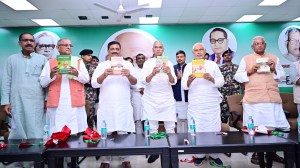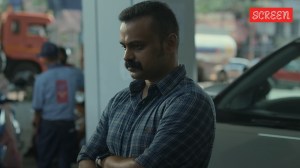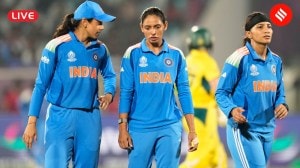The many histories of the 1965 war
Shekhar Gupta's National Interest column of September 9, `Dangers of military myths' elicited a great deal of response. Gupta had argued t...

Shekhar Gupta’s National Interest column of September 9, `Dangers of military myths’ elicited a great deal of response. Gupta had argued that merely extolling the performance of our troops for their courage in a kind of instant military history, doesn’t help us understand and analyse the reasons for our numerous failures on the battle front. In fact, the official history of the 1965 war with Pakistan only confirmed serious inadequacies, like the inability of the Indian Air Force to provide a decisive edge on the battlefield or even match up to the Pakistanis. Gupta ended his piece by pointing out that last year’s Kargil war indicated that the lessons of 1965 were not learnt. As he wrote:“If you look back at the way we once again rushed to hand out decorations post-Kargil and how closed we still are to the idea of finding out how on earth we let so many Pakistanis get so well entrenched on so much territory for so long, you wonder if the lessons of 1965 are so thoroughly forgotten that we are willing tomake the same mistakes again.”
The new reports lionise some and denigrate others’
`No steps were taken to defend Khem karan, Amritsar’
Major General (Retd) Niranjan Prasad
(in September 1965 he was GOC, 15 Infantry Division)
The controversies relating to the 1965 Indo-Pak war have erupted again. For me, they have personal overtones.
The two main players in the 1965 conflict were General J.N. Chaudhuri and General Harbaksh Singh, Chief of Army Staff (COAS) and Army Commander respectively.
Harbaksh Singh was at loggerheads with his superior COAS, on the one hand, and with subordinate, Chief of Staff General Joginder Singh, an officer with impeccable personal and professional credentials, on the other.
As I was myself involved, I would like to place on record the facts as known to me. I do so with a full sense of responsibility.
The most controversial issue of the 1965 conflict was over who considered withdrawing to the Line of the River Beas. Joginder Singh, in his book, states unequivocally that Harbaksh was obsessed with the idea of defending Punjab on the Line of Beas. On more than one occasion Harbaksh mentioned to me that if the Armoured Division was moved out of Punjab, he would make no plans and would fall back on the Line of the Beas. After 1965, General Chaudhuri told me that Harbaksh himself told him “my left flank has collapsed and I will be withdrawing to this Line of Beas”. Chaudhuri instructed him to hold fast, flew into Ambala and gave orders against any withdrawal (Behind the Scene, pg 240).
The point to note is that an order of this dimension can only be given by the Union Cabinet/Prime Minister.
General Chaudhuri’s plan was to mount the operation in May ’65. When the ground was tankable and rivers and streams were low, the 11 Corps was to ensure the defence of Punjab while a strike Corps made a thrust towards Sialkot from the North. Harbaksh had made no plans and the operation had to be postponed. The plan, if it had been implemented in May ’65, could have yielded quick and conclusive results. There were talks of a new Army Commander taking over.
Lahore is mentioned over and over again, Pakistan gloats over its valiant defence of Lahore. The impression in India is that we failed to capture Lahore. The fact is Lahore did not feature at all in any of our plans at any stage. The limit of the operations of the 11 Corps was the East Bank of the lchogil Canal, Lahore is way beyond.
In May ’65, Divisional Commanders were given short notice to make their plans. I made mine which were duly approved by the Corps Commander and I issued my orders to my formations.
Harbaksh Singh rejected my plan and tried to browbeat me into a capture of Bhasin, a place of no significance with not even a track leading to it. I persisted in my refusal to alter my plan and offered to resign. The matter went up to the COAS. The COAS debriefed me in great detail and confirmed my plan in toto. This was the start of my problems with Harbaksh Singh.
The primary task given to the 15 Division was the security of the Grand Trunk Road axis. For this, 54 Brigade was ordered to establish a firm base at Gosal-Dial, while 38 Brigade was in reserve. Whatever the ups and downs, from early on September 6, 1965, till the ceasefire on September 23, both Brigades of the Division (the Brigade was taken away three days before the operation) remained in occupation of large tracts of Pakistan territory. The GT axis remained secure.
My plan took off to a flying start as mentioned by Harbaksh himself but was sabotaged by him (War Dispatches by Harbaksh Singh, pg 90).
I never ordered the withdrawal of any unit. The 3 Jat’s supporting weapons were destroyed by the Pakistan airforce so Brigadier Rikh withdrew 3 Jat. As soon as I came to know of this, I countermanded his order, as he could not contact 3 Jat. I ordered 38 Brigade to move up and re-establish the 3 Jat position at Dograi, which they would have done by September 6 evening.
However, Harbaksh arrived and gave direct orders to Brigadier Pathak to proceed to Bhasin. I protested verbally and in writing that it would throw all my plans out of order. I paid the price for my protest (see Pathak’s, article in the Illustrated Weekly, 21 August 1988, and Behind the Scene, pg 148).
The plan to advance up to the lchogil canal in daylight without artillery or air support was thoroughly unsound. The 11 Corps should have taken up its May 1965 positions to defend Punjab.
In earlier studies, Pakistan’s possible thrusts on Khem Karan-Beas and towards Chamb-Jaurian were foreseen, certain vital areas like Khem Karan, Amritsar, were identified. Yet, on September 6, no steps whatever were taken to defend these areas.
In World War II, anything up to 60 air sorties would be mounted even for a battalion attack. In 1965, just 22 sorties were flown in support of the Army. There was virtually no air support. Pakistan air did considerable damage.
The 1 Corp’s thrust towards Sialkot was the key element of the operation. The powerful strike Corps hardly moved. Harbaksh started the operation without a plan, off the cuff orders were issued to formations, even to units.
Harbaksh’s version differs from General Joginder Singh’s on all the important issues. I can say without reservation that Joginder’s version is in keeping with the facts.
Sinha and his team were assigned the task of researching the 1965 war by the government. He told me that after examining various sources he concluded that, by and large, my version of events was correct. To my surprise he told me that though his manuscript was cleared by the Ministry of Foreign Affairs, its publication had been withheld due to pressure from some senior defence officers.
The new reports appearing in the media lionise some people and denigrate others. Unfortunately, General Chaudhari and General Joginder Singh are not around to clarify things. The motive for all these publications is not understood. While Harbaksh’s version which is full of incorrect statements is given prominence, the facts recorded by his own Chief of Staff, General Joginder Singh in Behind the Scene are ignored.
Harbaksh and his supporters are perhaps frustrated that, after 1965, he was not made COAS or given any post like that of governor or ambassador. His political ambitions were also thwarted he participated in a Lok Sabha as a candidate and lost.
It is incumbent on the media to ensure that only factual and unbiased reports are published.
`If IAF didn’t play its part, how did it go so deep into Pakistani territory?’
Air Commodore (Retd) A.L. Saigal
In his article, `Dangers of military myths’ (IE, September 9), Shekhar Gupta has committed many errors in writing about the role of the IAF during the 1965 war with Pakistan.
The aerial campaign was opened within one hour of the Army Chief asking for the IAF’s help in the Chhamb Jaurian sector at dusk on September 1, 1965.
The campaign was opened with 18 aircraft, 28 missions and not just four vampires. No doubt the four vampires were shot down but this aerial action halted the advance of the Pakistan Army. Thereafter, the Pakistan Army could not advance even 100 yards. The promptness of decision-making and the quick action by the IAF saved the nation from a major catastrophe. Then Defence Minister Y.B. Chavan’s personal diaries, as referred to in Debacle to Revival (pg 257) by R.D. Pradhan, confirms this. Then Chief of Air Staff Air Marshal Arjan Singh had brought to the notice of the Defence Minister that such air strikes without proper planning may result in our losses as it was difficult for the pilots to distinguish between friend and foe. The Defence Minister accepted this.
Incidentally, vampires were not made of plywood but of metal. There is one in the IAF museum at Palam. It may be worth Shekhar Gupta’s while to visit the museum and see it for himself. He is perhaps confusing it with the mosquito aircraft used by the RAF during World War II.
If IAF was simply not prepared for war, physically or mentally, how did it go as deep into Pakistani territory, as Peshawar, Kohat, Rawalpindi, Multan and Sargodah, for launching strikes? Was the Pakistan Air Force able to penetrate as far as Delhi, Bombay and even Ahmedabad, to launch air strikes?The Air Force Commander in the Eastern Sector was not decorated.
The aircraft with Balwant Rai Mehta, chief minister of Gujarat on board, which was shot down by Pakistan Air Force was not a Dakota, but Cessna an American single-engine aircraft which had taken off from Ahmedabad and was bound for the Kutch area along the border without informing any agency connected with the country’s security.
Gupta states that in the 1965 war, the IAF failed to tilt the balance in any theatre of war. Why did then Pakistan seek an end to the conflict, almost at any terms (Air Marshal Asghar Khan’s The First Round, Indo-Pakistan war 1965, pg 49)?
`The Navy was kept out of the action’
Mukund B. Kunte, New Delhi
I would like to correct Shekhar Gupta’s misperception that in 1965, in spite of the Navy not taking part, the Naval Chief was decorated. That may have been for cosmetic reasons so as not to single out an one service when it came to awarding decorations. The fact is that the Navy was told to stay away from the action on specific advice, presumably from the Foreign Office.
The idea was that it was better not to escalate matters.
The protestations of Admiral Soman, only a three-star admiral at that time, were brushed aside. It was with considerable difficulty and because of Soman’s insistence with Defence Minister Y.B. Chavan that he was finally allowed to see the P M and to get it from his mouth that the Navy was not wanted. One may now surmise that the tensions of the 1965 war and the wrong handling of it on the part of the government, had its effects on the diminutive Lal Bahadur Shastri, leading to his cardiac problem in Tashkent.
Whether we learnt the lessons of the 1965 war or not, it was fortuitous that last year the Navy deployed all its operational ships in the north Arabian Sea. It had a salutary effect. Pakistan retreated because it could ill-afford an economic blockade.



- 01
- 02
- 03
- 04
- 05



























